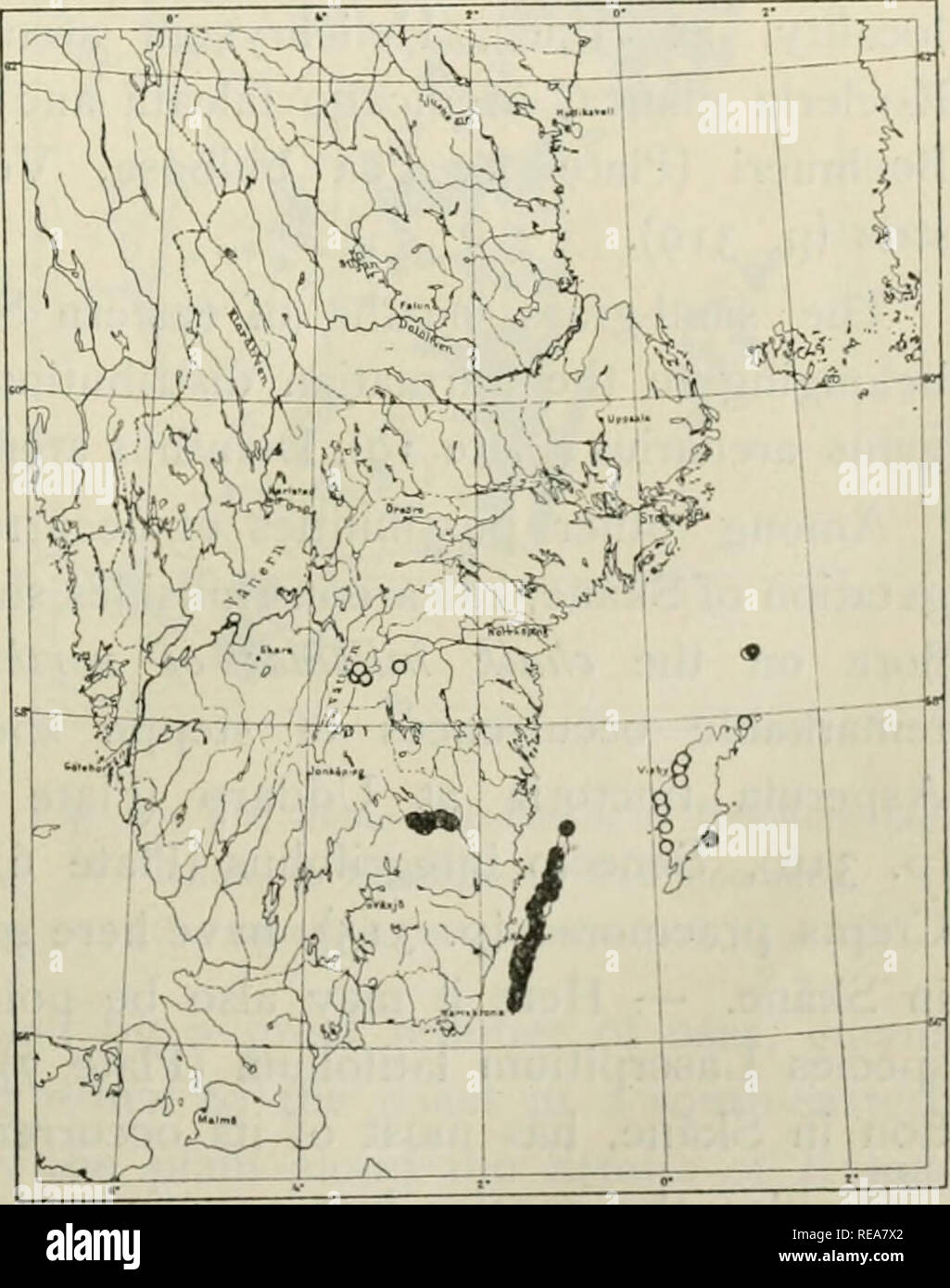. The continental element in the flora of south Sweden. Plants. THE CONTINENTAL ELORA OF SOUTH SWEDEN 299 moraine hillocks and ridges has been given by Sernander (igo8). The following steppe species are to be found there: Artemisia campestris (Plate 5), Asperula tinctoria (Plate 5 and 15), Centaurea jacea (? spontaneous), Crepis praemorsa (P* 3^5)' Fragaria viridis, Phleum Boehmeri (Plate 5), Polygala comosa (p. 316), Potentilla rupestris (p. 326), Prunella grandiflora (Plate 6), Ranunculus polyanthe- mos (p. 319), Seseli libanotis (p. 334), Stipa pennata (cf. Appendix I), Trifolium montanum (

Image details
Contributor:
The Book Worm / Alamy Stock PhotoImage ID:
REA7X2File size:
7.2 MB (274 KB Compressed download)Releases:
Model - no | Property - noDo I need a release?Dimensions:
1404 x 1780 px | 23.8 x 30.1 cm | 9.4 x 11.9 inches | 150dpiMore information:
This image is a public domain image, which means either that copyright has expired in the image or the copyright holder has waived their copyright. Alamy charges you a fee for access to the high resolution copy of the image.
This image could have imperfections as it’s either historical or reportage.
. The continental element in the flora of south Sweden. Plants. THE CONTINENTAL ELORA OF SOUTH SWEDEN 299 moraine hillocks and ridges has been given by Sernander (igo8). The following steppe species are to be found there: Artemisia campestris (Plate 5), Asperula tinctoria (Plate 5 and 15), Centaurea jacea (? spontaneous), Crepis praemorsa (P* 3^5)' Fragaria viridis, Phleum Boehmeri (Plate 5), Polygala comosa (p. 316), Potentilla rupestris (p. 326), Prunella grandiflora (Plate 6), Ranunculus polyanthe- mos (p. 319), Seseli libanotis (p. 334), Stipa pennata (cf. Appendix I), Trifolium montanum (p. 301), Veronica spicata (p. 310), and Viola rupestris (p. 319). Here we may call attention to the two decidedly continental wood-hillside species Dracocephalum Ruyschiana (Plate 4) and Pulmonaria angustifolia (Plate 4) which have in Falbygden their richest occurrences in South Sweden. The flora of Vastergotland comprises two more steppe species, Allium montanum, which has a minor occurrence at Alingsas (Plate 6), and Inula ensifolia on the lime- stone pavement at Osterplana on Kinnekulle (cf. Appendix I). The occurrences of the steppe species in Ostcrgotland are something like those in Falbygden. The steep and well-exposed slopes of Omberg and of the calcareous moraine hillocks and oses on the Silurian plan immediately to the east of Omberg form suitable localities. The neighbourhood of Omberg con- tains the following steppe species: Arte- misia campestris (Plate 5), Asperula tinctoria (Plate 5), Centaurea jacea (? spontaneous), Crepis praemorsa (p. 315), P'ragaria viridis, Melica ciliata(Plate 10), Oxytropis pilosa (Fig. 5), Phleum Boehmeri (Plate 5), Polygala comosa (p. 316), Potentilla arenaria (Plate 3; cf. Appendix I), Ranunculus polyan- themos (p. 319), Seseli libanotis (p. 334), Trifolium montanum (p. 301), Veronica spicata (p. 310), and Viola rupestris (P- 319)- Here attention must be called to the remarkable occurrences in this district of species such a'} the contin